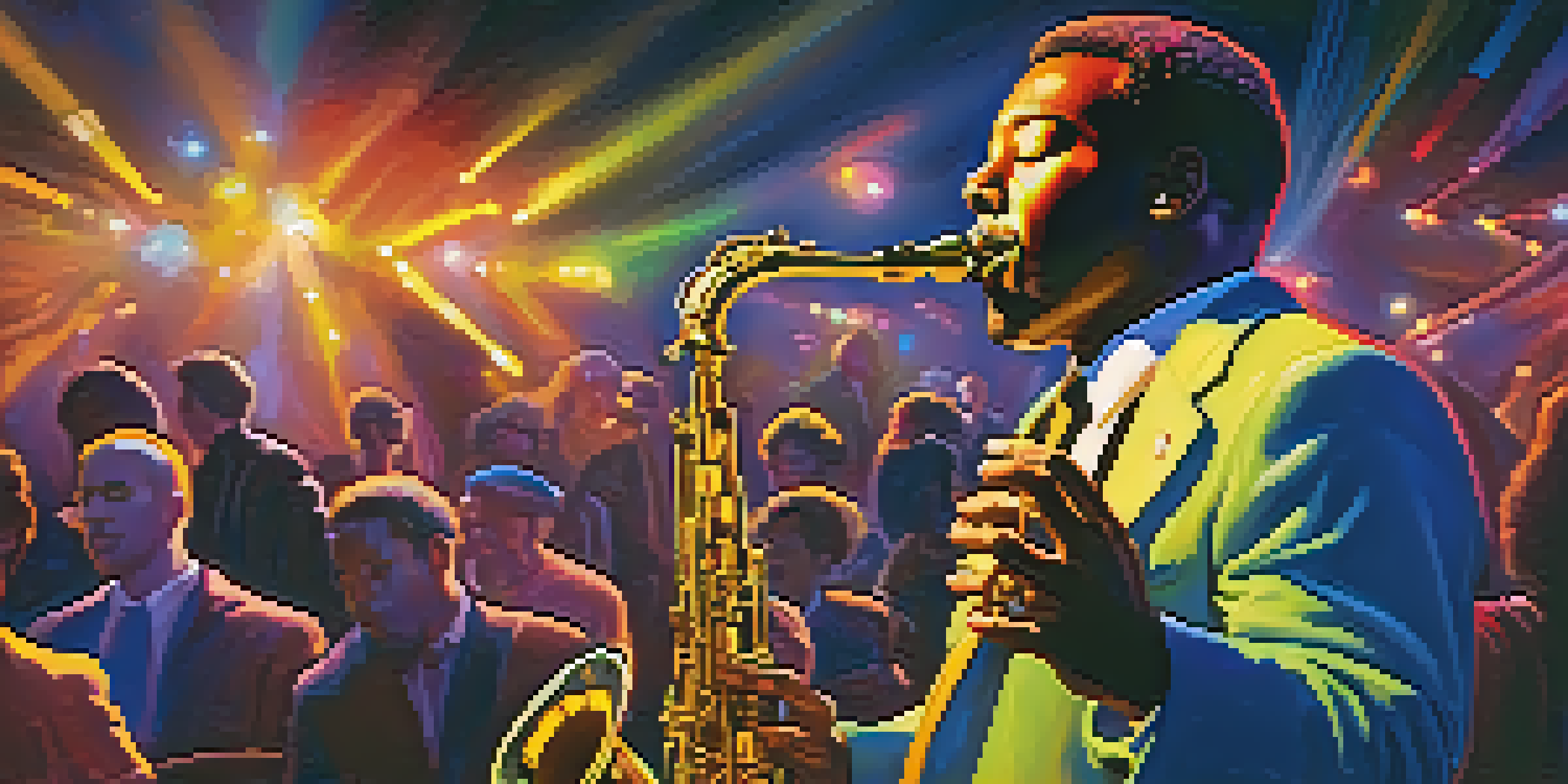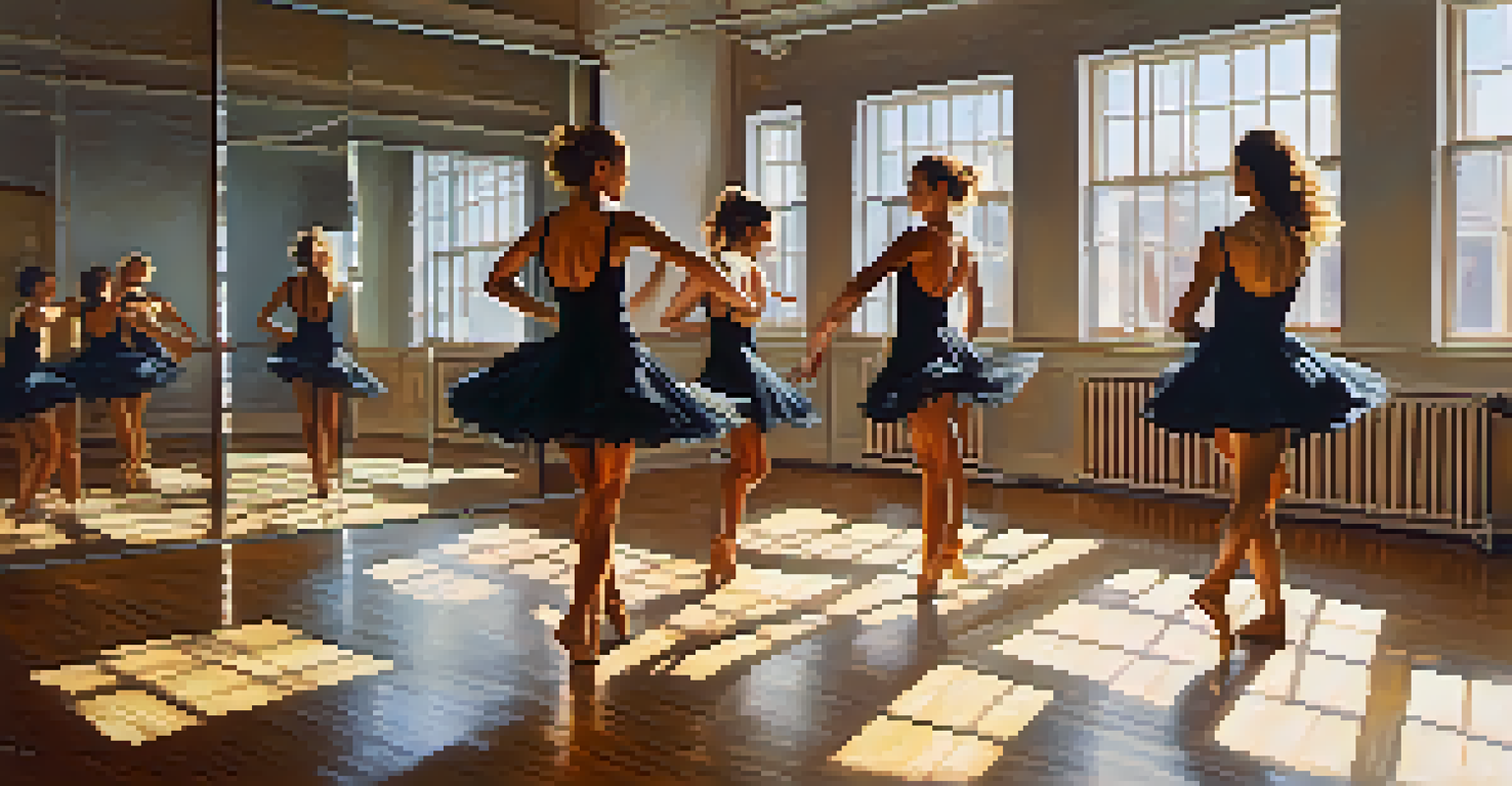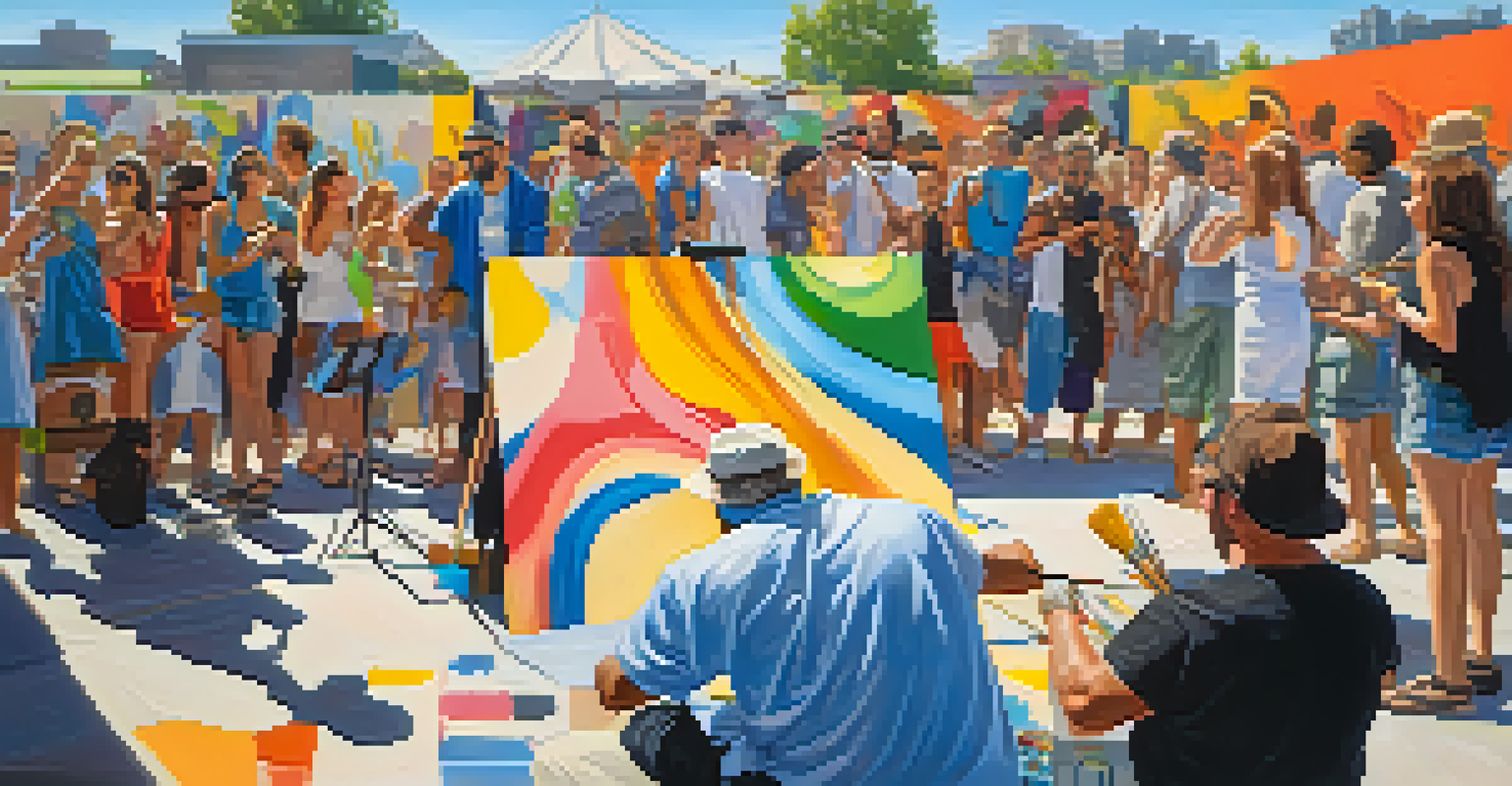The Importance of Improvisation in Live Performance Art

Understanding Improvisation in Performance Art
Improvisation, often referred to as 'improv,' is the art of creating spontaneously. In the context of performance art, it allows artists to explore new ideas and express their creativity in real-time. Whether it's through dance, theater, or music, improv adds an element of surprise that can captivate audiences.
Improvisation is allowing yourself to make mistakes. Art is knowing which ones to keep.
Imagine a jazz musician suddenly changing a melody based on the energy of the crowd. This flexibility can lead to unforgettable moments that are unique to each performance. Such spontaneity can also reflect the artist's emotions, making the experience more authentic for both the performer and the audience.
Ultimately, improv is not just about making things up on the spot; it's about being in tune with the moment and responding to it in a way that enhances the overall experience. This skill is fundamental for any live performance, making it essential for artists to master.
Building Connection with the Audience
One of the most significant benefits of improvisation is its ability to forge a connection between performers and audiences. When artists improvise, they often engage with the crowd, responding to their reactions and energy. This interaction creates a shared experience, making the audience feel like they are part of the performance.

For instance, a comedian might pick up on audience laughter or reactions, adjusting their routine to capitalize on the moment. This back-and-forth dynamic can lead to moments of joy that are both unexpected and memorable. It transforms a performance from a mere act into a living, breathing conversation.
Improv Connects Artists and Audiences
Improvisation fosters a dynamic interaction between performers and audiences, creating a shared experience that enhances emotional connections.
This sense of connection can elevate the entire performance, leaving a lasting impression on the audience. It invites them into the world of the artist, creating an emotional bond that can resonate long after the show ends.
Enhancing Creativity Through Spontaneity
Improvisation encourages performers to think outside the box, pushing the boundaries of their creativity. By stepping away from scripted material, artists can explore new ideas and interpretations, leading to innovative performances. This spontaneity can often unveil hidden talents or unexpected skills.
The only real mistake is the one from which we learn nothing.
Consider a dancer who, instead of following a set choreography, decides to express their feelings spontaneously. This freedom can lead to breathtaking moments that highlight their individuality. It’s a reminder that creativity thrives in environments where risk-taking is encouraged.
Moreover, improvisation can help artists break free from creative blocks. When performers embrace the unknown, they often discover new pathways for expression, leading to richer, more dynamic performances.
Developing Essential Skills Through Improvisation
Improvisation not only cultivates creativity but also develops essential skills like adaptability and quick thinking. In live performances, unexpected challenges can arise, and the ability to pivot gracefully is crucial. This skill set is invaluable, enabling artists to handle unforeseen circumstances with poise.
For example, a theater performer might face a missed cue or a sudden prop malfunction. Those who are well-versed in improv can seamlessly integrate these moments into the performance, often turning potential mishaps into highlights. This adaptability keeps the energy alive and the audience engaged.
Creativity Flourishes in Spontaneity
By embracing improvisation, artists can break free from constraints, leading to innovative expressions and the discovery of hidden talents.
Furthermore, practicing improv can enhance an artist’s confidence. The more comfortable they become with spontaneity, the more they trust their instincts during a performance, leading to a more authentic and compelling delivery.
Fostering Collaboration Among Performers
Improvisation is not just an individual endeavor; it often involves collaboration among performers. In many art forms, such as theater or dance, artists must work together to create a cohesive experience. Improv exercises can strengthen these collaborative bonds, promoting teamwork and mutual understanding.
Imagine a group of actors on stage, each responding to one another's cues in real-time. This synergy can lead to beautifully spontaneous moments, where the performance evolves organically. The trust built through these collaborative improvisational practices enhances the overall quality of the performance.
Moreover, this collaboration fosters a sense of community among artists. By sharing the stage and creating together, performers develop deeper relationships, which can lead to more profound artistic exploration and innovation.
The Role of Improvisation in Different Art Forms
Improvisation plays a crucial role across various performance art forms, each with its unique flavor and style. In theater, for instance, actors might engage in improv to develop their characters, leading to richer, more authentic portrayals. This technique allows them to explore different facets of their roles, making performances more dynamic.
In music, genres like jazz and blues thrive on improvisation, where musicians often create solos on the spot. The spontaneity found in these performances is a hallmark of their appeal, inviting listeners into an unpredictable musical journey. Each note played is a reflection of the artist’s emotions in that moment.
Collaboration Strengthens Performances
Improvisation not only encourages individual creativity but also promotes teamwork among performers, enhancing the overall quality of art.
Even in visual arts, improvisation can manifest during live painting sessions, where artists create in response to music or audience feedback. This cross-pollination of ideas highlights the versatility and importance of improv across the artistic spectrum.
Embracing Mistakes as Part of the Process
One of the most liberating aspects of improvisation is the acceptance of mistakes. In live performances, things won’t always go as planned, and that’s perfectly okay. Instead of viewing errors as failures, improv encourages artists to embrace them as opportunities for growth and creativity.
For example, a musician might hit a wrong note but choose to incorporate it into their performance, creating an unexpected harmony that resonates with the audience. This willingness to adapt and pivot can lead to some of the most memorable moments in live art.

By fostering a mindset that values experimentation over perfection, artists can unlock new dimensions of their creativity. This approach not only enhances their performances but also inspires audiences to embrace the beauty of imperfection.